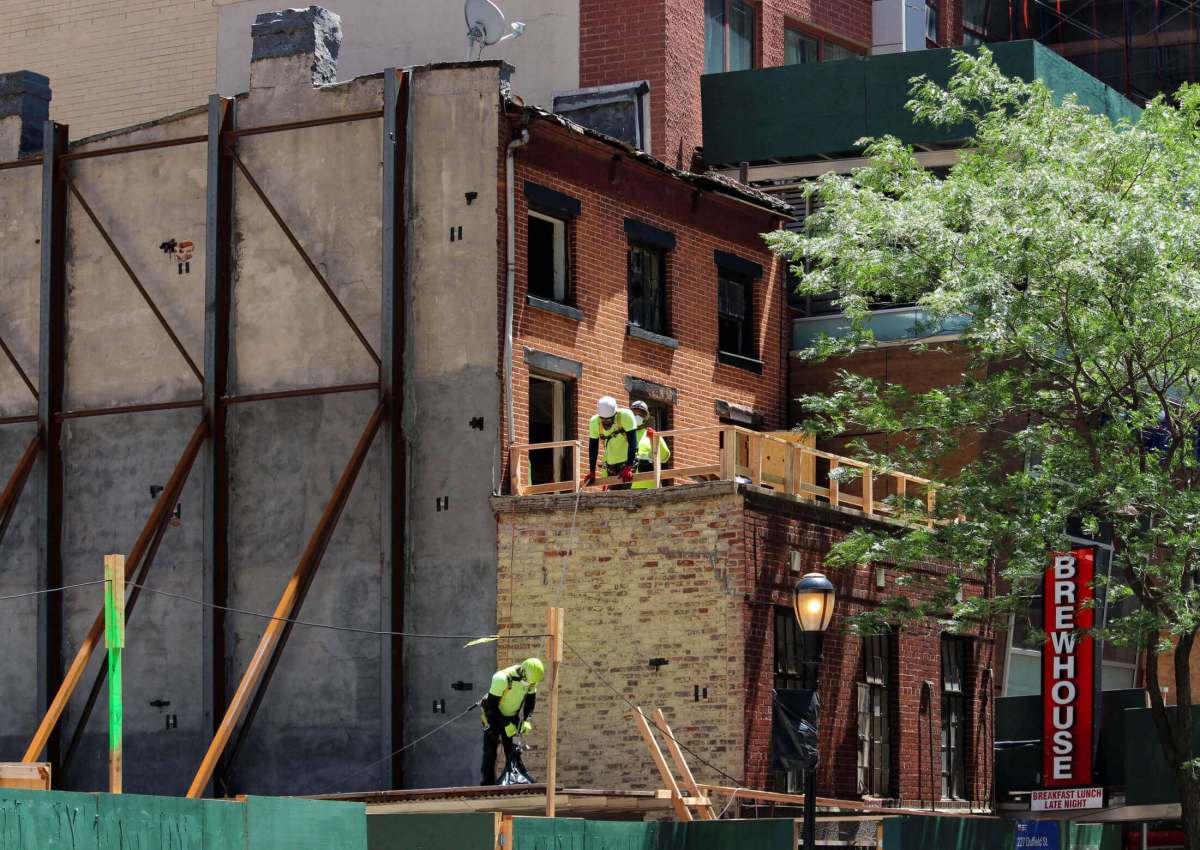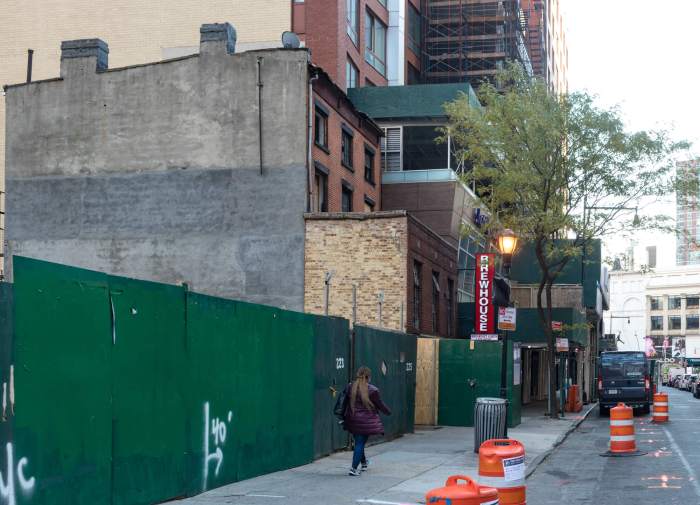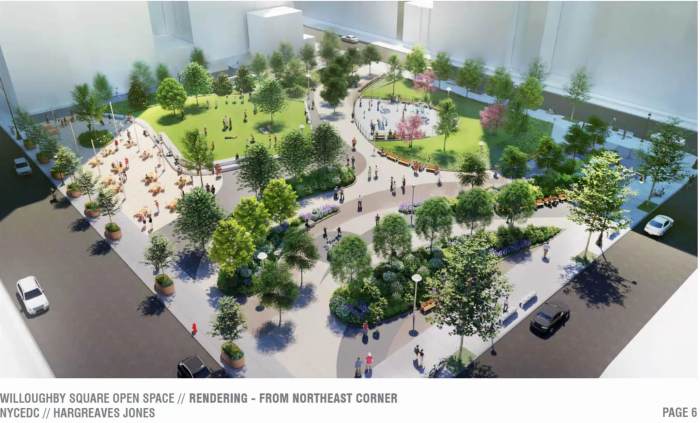Workers were busy at the beleaguered former home of 19th century abolitionists in Downtown Brooklyn on July 11— a possible sign that stabilization of the landmarked but neglected building might be inching forward.
A temporary safety railing has been installed on top of the early 20th century addition to the front facade of 227 Abolitionist Place-Duffield Street. Workers were hauling bags of refuse from the interior, lowering them one at a time to another worker below.
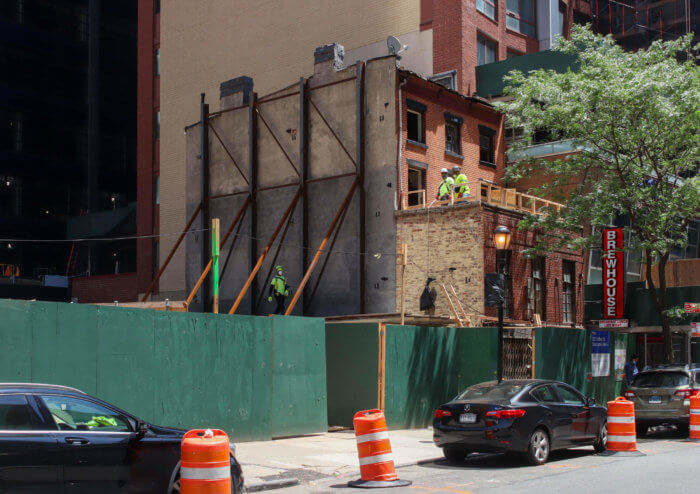
Permits for the stabilization of the Greek Revival home of abolitionists Thomas and Harriet Truesdell were issued last month, but what exactly the future holds for the property remains unclear. It has been sitting empty and exposed to the elements since it was purchased by the city after its 2021 designation, just the latest in a long saga for the property.
Activists have been pressuring the city to convert the space into a heritage center while also advocating that the adjacent park planned for Abolitionist Place honors the history of the site.
The city began work to “stabilize and protect the structure to provide the basis for future rehabilitation and restoration” late last year, according to signs posted at the site at that time, though progress has been slow.
Community members are also pushing for changes to the proposed design of an art installation to be installed at the yet-to-be-built Abolitionist Place park, next door to 227 Abolitionist Place, asking the city to include references to the abolitionists who lived in the neighborhood — including Joy Chatel, also known as “Mama Joy,” the most recent resident of the home.
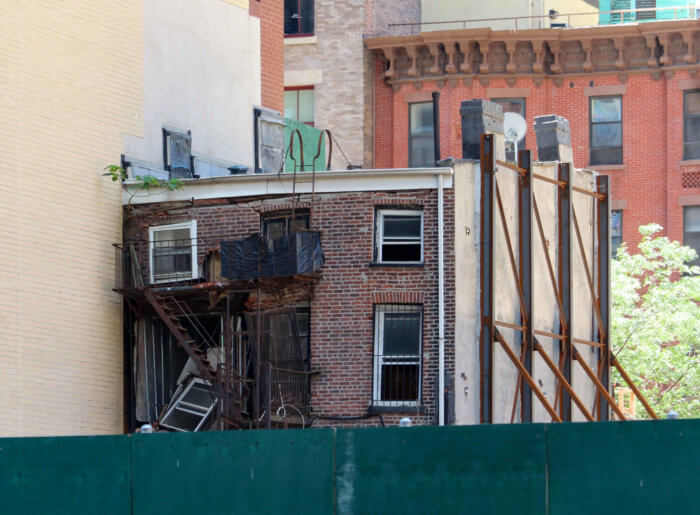
Artist Kameelah Janan Rasheed, chosen by the city’s Department of Cultural Affairs to design the piece, started a three-month public engagement process to gather feedback on her designs in January — but some locals were frustrated when multiple virtual sessions were cancelled, abridging the process.
The NYC Department of Design and Construction, which is overseeing the renovation of the house, informed Brooklyn Paper’s sister publication Brownstoner in June that there would be a community engagement process as part of the planning, but no timeframe was given.
Workers observed this week were busy in the front of the house while the partially collapsed rear wall appears to remain untouched so far.
A version of this story first appeared on Brooklyn Paper’s sister publication Brownstoner.


